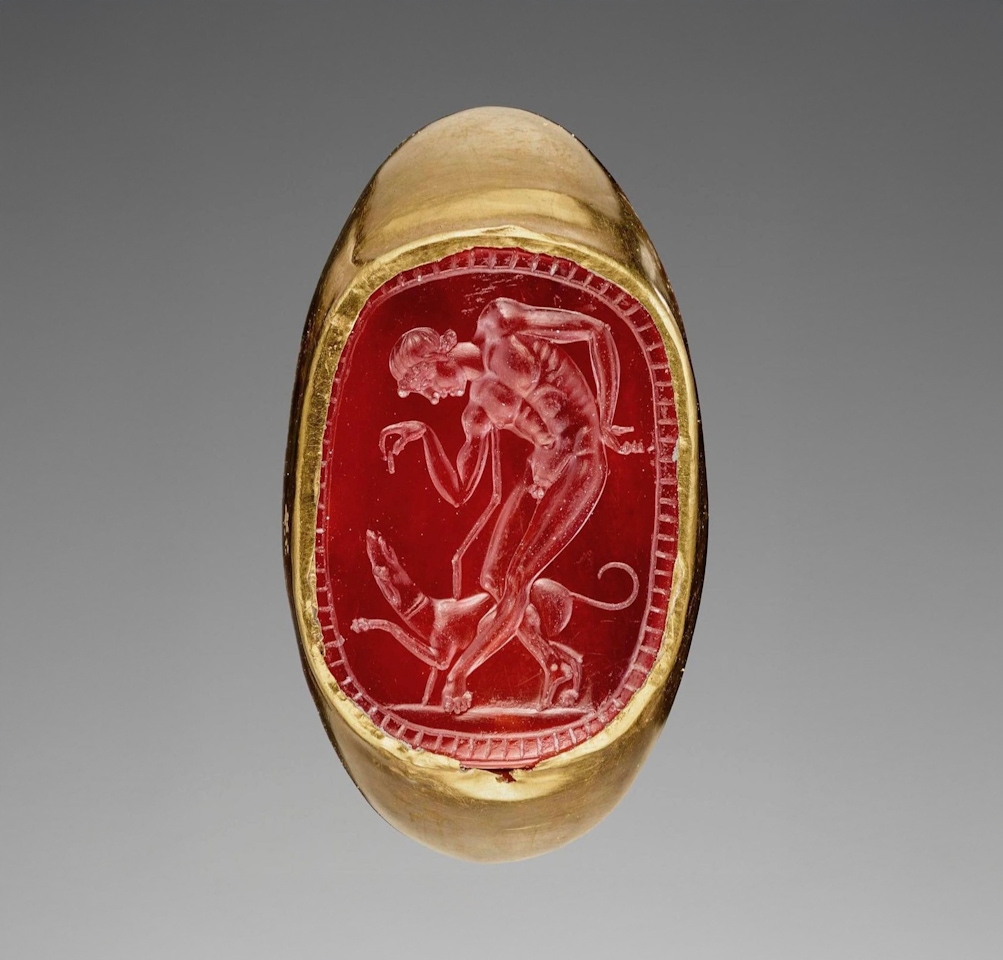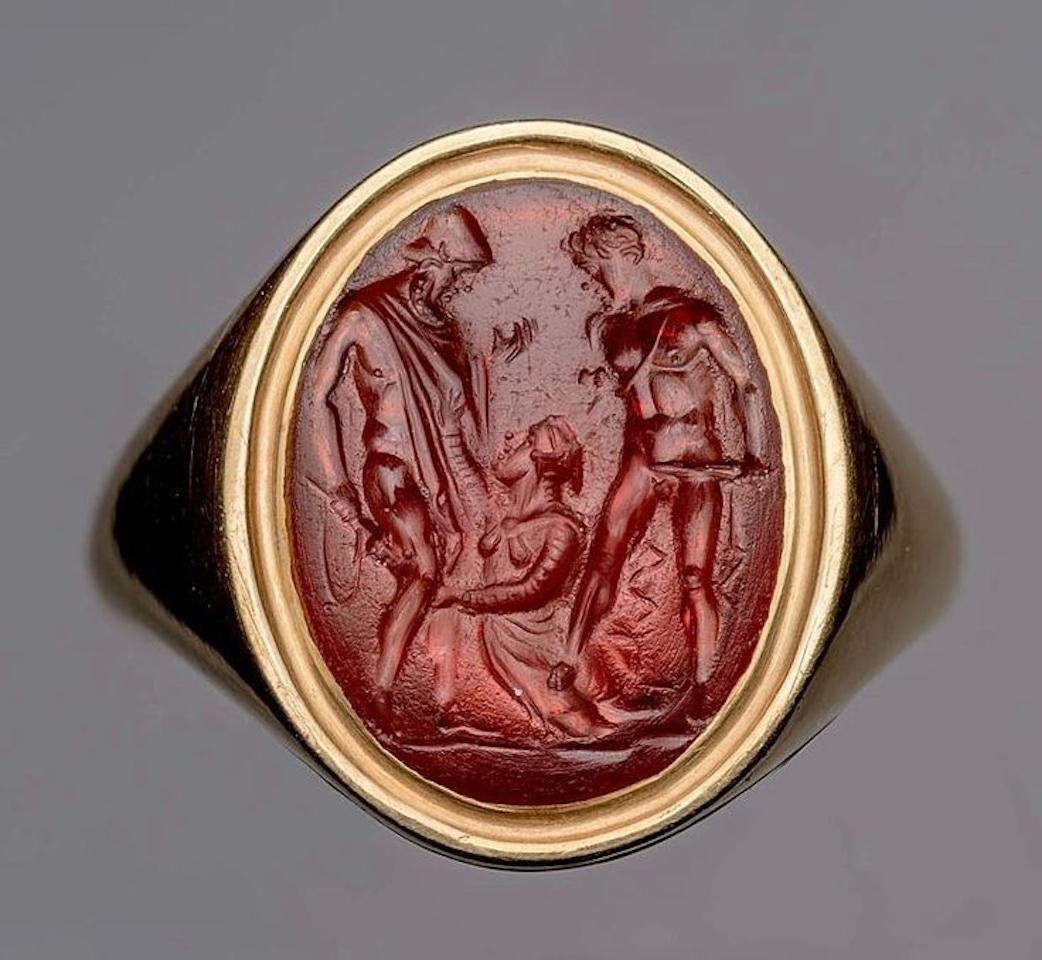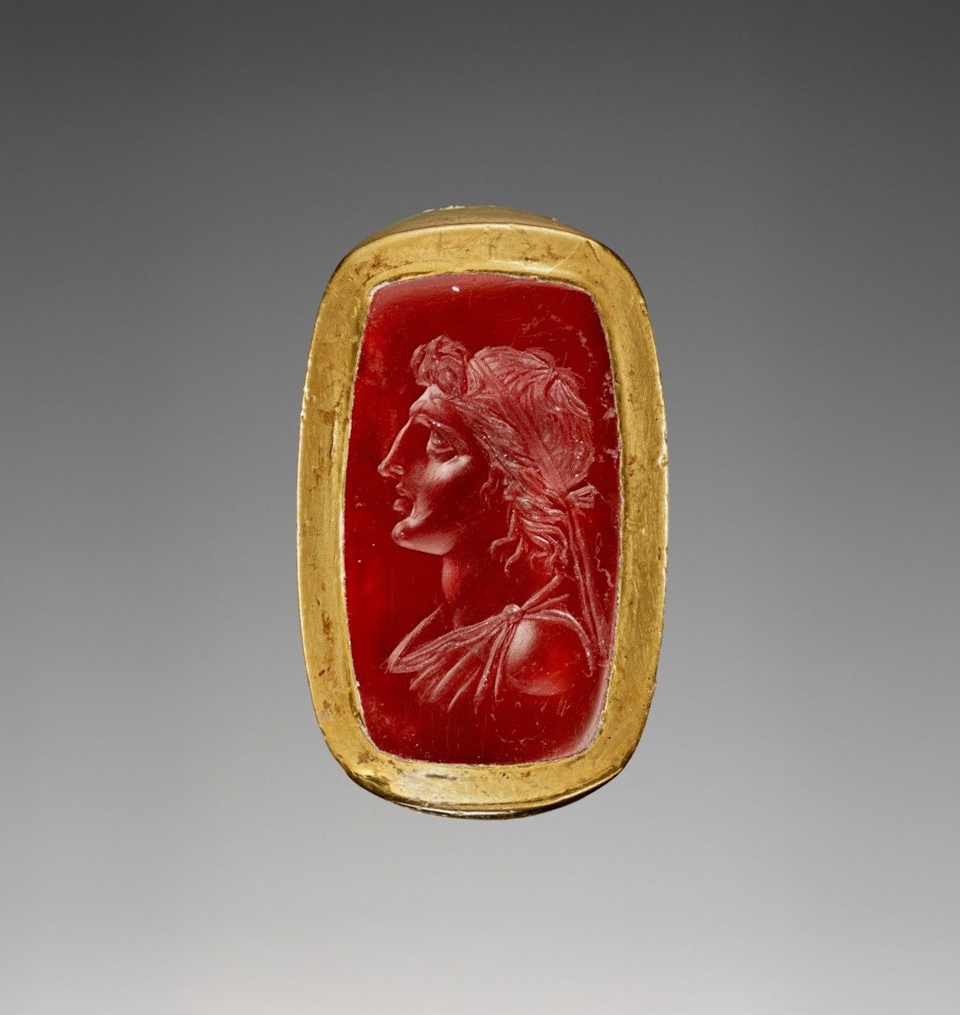



[About]
During the 3rd to 2nd centuries B.C., Roman gold rings adorned with engraved carnelian gems emerged as prominent symbols of status and identity within Roman society. These rings were not merely decorative; they served as potent symbols of wealth, power, and cultural affiliation. Carnelian, a reddish-orange variety of chalcedony, was a prized gemstone in the ancient world. Its rich hue and durability made it a popular choice for engraving intricate designs and symbols. Roman artisans meticulously carved detailed motifs into carnelian gems, ranging from mythological figures to intricate geometric patterns. These engravings often held symbolic significance, conveying messages of status, allegiance, or personal beliefs. The use of carnelian gems in Roman jewelry was not merely aesthetic; it also carried cultural and social connotations. The choice of motifs and symbols reflected the wearer's identity, social standing, and affiliations. For example, depictions of Roman gods or goddesses conveyed devotion to the pantheon, while motifs associated with military victories or civic achievements celebrated the wearer's accomplishments. Today, these exquisite artifacts continue to captivate scholars, collectors, and enthusiasts alike, providing a window into the rich tapestry of Roman civilization and the enduring allure of ancient jewelry craftsmanship.



